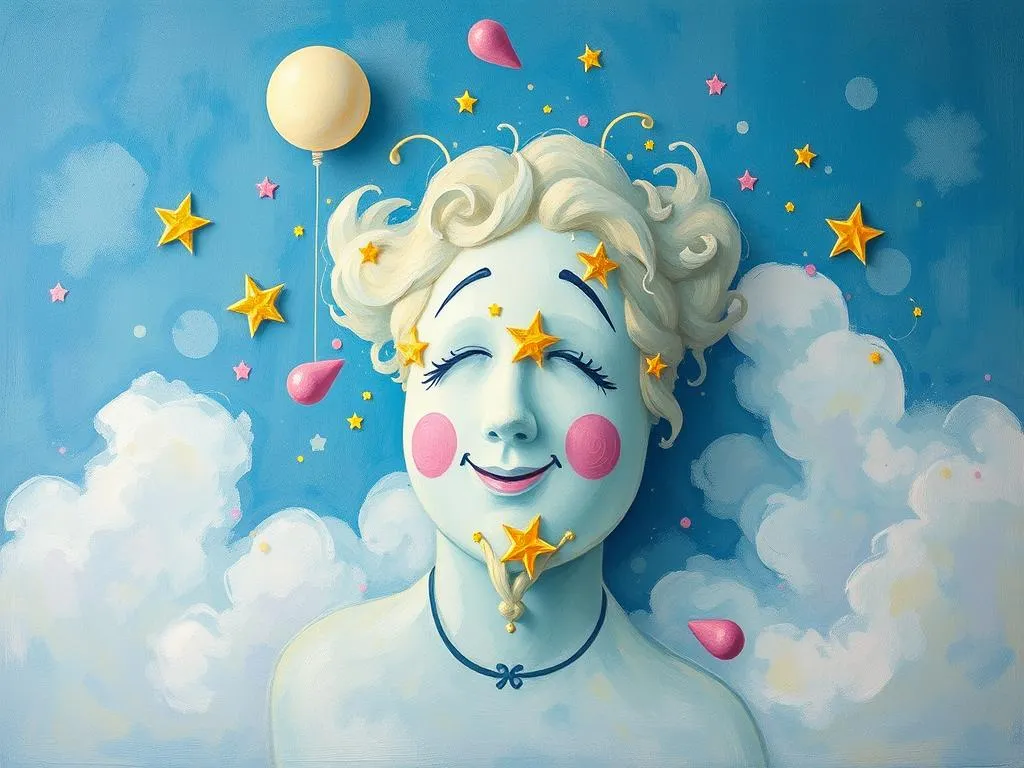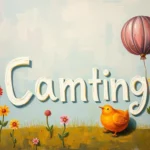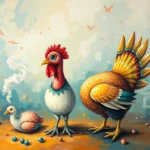
Have you ever woken up from a dream that clung to your mind like a whispering secret? Dreams have a way of sparking curiosity, often leaving us wondering what they might mean. They can be a mix of bizarre narratives, familiar faces, or even the mundane, yet each element holds significance. In this article, we’ll embark on a journey to decode the mysteries of dream symbolism, exploring its cultural roots, psychological implications, and how these insights can foster personal growth.
As we unveil the depths of your subconscious, remember that dreams are not merely a collection of random images; they are a window into your innermost thoughts and feelings. So, grab a cozy blanket, perhaps a warm cup of tea, and let’s dive into the symbolic worlds of our dreams together.
Imagery Unveiled: The Language of Symbols
Dreams speak in a language of symbols, each representing various aspects of our psyche. Whether you’re dreaming of flying, losing your teeth, or encountering strange animals, understanding these symbols can illuminate your waking life. Let’s explore some common dream symbols and their deeper meanings.
1. Flying: Liberation and Aspirations
When you dream of soaring through the skies, it often reflects a desire for freedom or a break from the constraints of daily life. This sensation of weightlessness could signify your aspirations or ambitions, hinting at your yearning to rise above challenges.
2. Water: The Flow of Emotions
Water in dreams symbolizes emotions and the subconscious. The state of the water—calm, turbulent, or murky—can indicate how you’re feeling. A peaceful lake may suggest tranquility, while a raging storm could point to inner turmoil that needs addressing.
3. Teeth Falling Out: Anxiety and Transition
Dreaming of losing teeth is a common experience linked to feelings of vulnerability or anxiety about appearance and self-image. It can also represent significant life transitions, reflecting concerns about aging or fear of losing control.
4. Animals: Instincts and Intuition
Encounters with animals in dreams often tap into our primal instincts. A fierce lion may symbolize courage, while a gentle deer could represent gentleness and intuition. The animal’s behavior can provide insights into your own feelings and how you navigate the world.
5. Being Chased: Avoidance and Fear
Dreams of being pursued usually indicate that you are running from something in your waking life—be it a fear, responsibility, or unresolved issue. This symbol serves as a reminder to confront these challenges rather than evade them.
Each of these symbols holds a mirror to your inner world, offering clues about your feelings, fears, and desires. By reflecting on their meanings, you can gain a better understanding of your emotional landscape.
Dreamscapes: Narratives of the Subconscious
Now that we’ve examined some powerful symbols, let’s delve deeper into a few dream scenarios. Each of these narratives can reveal different layers of meaning, shedding light on your subconscious thoughts and feelings.
Scenario 1: The Flight of Freedom
Imagine you find yourself flying over a beautiful landscape, feeling the wind in your hair. This dream indicates a profound sense of liberation; perhaps you’re breaking free from a restrictive situation in your life, such as a suffocating job or a toxic relationship. The expansive skies represent your potential and a reminder to embrace your aspirations.
Scenario 2: The Flood of Emotion
You dream of being caught in a sudden downpour, unable to escape the rising waters. This scenario might manifest when you’re feeling overwhelmed by your emotions or facing a significant life challenge. The flood serves as a metaphor for your emotional state—perhaps indicating it’s time to confront and process these feelings rather than let them wash over you unnoticed.
Scenario 3: The Lost Teeth Revelation
In your dream, you look in the mirror to find that your teeth are crumbling away. This unsettling imagery often relates to anxiety about aging or change. It may signify concerns about your personal and professional life and can serve as a prompt to confront these insecurities head-on.
Scenario 4: The Chasing Shadows
Imagine running through a dark forest, constantly glancing over your shoulder as something pursues you. This type of dream often indicates avoidance—whether it’s a fear of failure, a difficult conversation, or an unresolved conflict. It’s a call to address what haunts you, rather than running away.
Scenario 5: The Fierce Beast
You find yourself face-to-face with a wild animal, perhaps a bear or a wolf. Instead of fleeing, you decide to stand your ground. This scenario represents confronting your fears or insecurities. It symbolizes inner strength and the capacity to tackle challenges with courage and confidence.
These dream scenarios serve as invitations to explore your emotional landscape further. By reflecting on your experiences within the dream world, you can gain valuable insights into your waking life.
Awakening Potential: Dreams as Catalysts for Growth
Now that we have journeyed through the world of dream symbolism and scenarios, let’s explore how these insights can fuel your personal growth. Dreams are not just fleeting images; they hold the power to inspire change and self-discovery.
1. Journaling Your Dreams
One of the best ways to connect with your dreams is through journaling. Keep a dream journal by your bedside and write down your dreams as soon as you wake up. Over time, patterns will emerge, helping you draw connections between your dreams and waking life. This practice can deepen your understanding of your subconscious motivations.
2. Embracing Emotions
When dreams highlight emotions—like the flood scenario—it’s essential to embrace these feelings rather than suppress them. Allow yourself to feel and process your emotions, using your dreams as a guide to navigate through challenges.
3. Facing Fears
If you frequently experience dreams of being chased, it’s a sign to confront what you’ve been avoiding. Identify the source of your fears and take small steps to address them. This proactive approach can lead to a sense of empowerment and clarity in your waking life.
4. Setting Intentions
Use your dreams to set intentions for personal growth. After reflecting on your dreams, think about how you can integrate the insights gained into your daily life. For example, if a dream about flying inspires you, consider setting goals that align with that sense of freedom and possibility.
5. Seeking Professional Guidance
If your dreams are consistently troubling or evoke strong emotions, it may be beneficial to seek guidance from a therapist. They can help you explore the underlying issues and provide tools for managing emotions and fears effectively.
These practical insights can help you harness the power of your dreams, turning them into sources of wisdom and motivation. Remember, the journey of self-discovery is ongoing, and dreams can be a significant part of that process.
As we conclude our exploration of dream symbolism, remember that dreams are a profound aspect of the human experience. They can be a canvas for your thoughts, fears, and desires, waiting for you to interpret their meaning. Embrace the insights they offer, and allow them to guide you on your path of self-discovery and growth.
Final Reflection
In the dance between the conscious and the subconscious, dreams serve as a bridge, guiding us through the chaos of life. They are not just fleeting images in the night but reflections of our innermost selves. By embracing the teachings of our dreams, we can transform our waking lives and step boldly into our authentic selves. So, the next time you awaken from a dream, take a moment to reflect—what truths might your subconscious be revealing?







